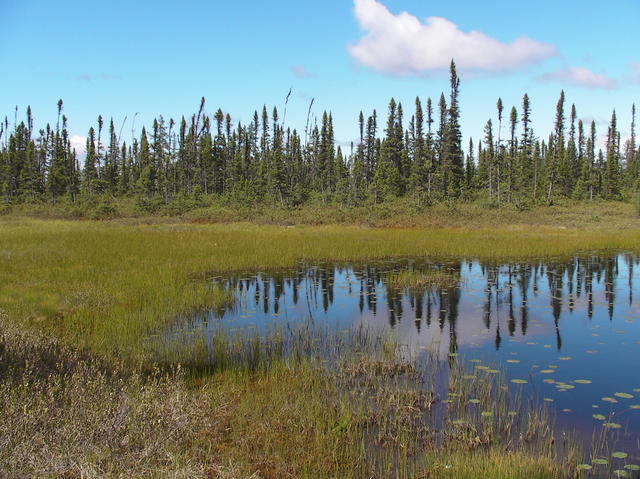Home » Regions » North America » Taiga
Taiga
Last updated: July 21st, 2020
To check where a specific point lies, you can look it up in our Ecoregion Locator.
↑Map Legend & Subregion List
This list will help you navigate the regions in case you have problems with viewing or clicking the interactive map above.
| Name | † | Color on Map |
| Alaska Boreal Interior | ○ | |
| Taiga Cordillera | ○ | |
| Taiga Plain | ○ | |
| Taiga Shield | ○ |
† Status: ✓ = Complete ○ = Needs Image … = Incomplete ∅ = Stub Only
↑Progress
Partially Complete | With Images | Complete w/ Images |
Get involved! You can help our ecoregion articles progress faster. Help us find photos of these regions. Contact us if you have any additions or corrections to any of these articles. You can also donate to support our ongoing work.
↑About the Taiga
The North American Taiga is a somewhat barren ecoregion that represents an intermediate zone between Tundra to the north and Northern Forests or Boreal forest to the south. The use of this term "Taiga" differs from the traditional Russian use of the word, and the use of the term in Siberia, which also includes the boreal forest. In North America, this region is considered separate from the boreal forest. South of the Hudson Bay, the Taiga region is replaced by the Hudson Plains, a more open and often wetter region influenced by its flat topography and the presence of the bay.The Taiga is characterized by abundant lakes, bogs, and other wetlands, with patches of boreal forest, as well as open shrubland and meadows. Tree growth is richest both along streams and rivers and on some upland sites, but overall the region is more open than the boreal forest, and tree growth tends to be stunted.
Much of this area experiences sporadic or discontinuous permafrost, contrasting with the continuous permafrost of the tundra.
Because North America used to be connected to Asia by a land bridge, connecting regions of similar climate and biome, many of the plants occuring in the North American Taiga are closely related to plants in Siberia. In many cases, the same species is treated as having a circumboreal distribution (inhabiting boreal forests on all continents of the Northern hemisphere) whereas in other cases, such plants are classified as closely-related species.
 This photo shows typical features of the Taiga ecoregion, including stunted tree growth transitioning to shrubland, meadow, and wetlands. Photo © peupleloup, CC BY-SA 2.0
This photo shows typical features of the Taiga ecoregion, including stunted tree growth transitioning to shrubland, meadow, and wetlands. Photo © peupleloup, CC BY-SA 2.0Plant Lists & In-Region Search
List Native Plants - List All Plants
Warning! This region extends outside the lower 48 US. We have only completed range maps for all plants in the lower 48 US; these lists and searches may thus have omissions for species which only occur in the portion of this region outside the lower 48 US.


